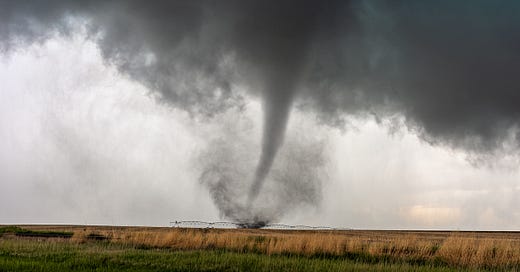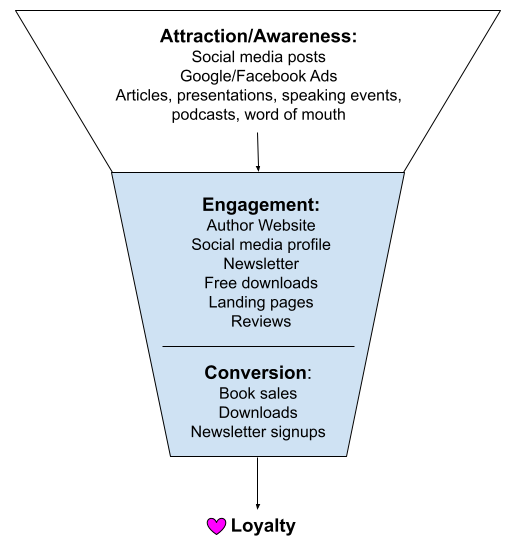My dear writer,
I’ve spent a long time thinking about where to start this project.
Over the years, I’ve gained a reputation among my writing friends as the go-to tech help. They ask me questions like “How do I set up a portfolio on my website?” or “Can you help me add Google Analytics?” or other specific needs. I’m always happy to share advice over a drink or a cup of coffee. I know I’m lucky that my day job keeps me informed about cutting-edge technology and marketing techniques. However, I’ve come to realize that very few of us question why we’re doing this.
“Why do you need a website? What are you trying to accomplish?” I ask my friends. They shrug and say, “I need to be out there.”
Most of us instinctively understand (or have been told by someone else) that we should create our little Author Corner of the Internet. If you can buy your groceries online and shop for clothes online and pay your bills online, then you can expect people to look for your work online, too.
But I think it’s good to question the why behind marketing. I’m all about working smarter, not harder. It doesn’t matter if this is the first step on your author marketing journey, or if you’ve been selling and promoting your books for years—can you answer the question? Why do you need a website, or a blog, or social media? Is there a rhyme or reason for this madness?
For answers, I can think of no better place to start than the Marketing Funnel.
The Marketing Funnel for Writers
Think about the last book you loved. How did you find out about it?
Maybe your co-worker told you about this new book she read for her Book Club. You did a little Googling and found the author’s website and some news articles about their latest novel. You followed the rabbit hole down as you stalked their social media and Goodreads profile, and then you landed on the Amazon page for that book. After reading some reviews, you were ready to commit. You hit the “Buy Now” button and that book showed up on your doorstep in two days. Or maybe you couldn’t wait to read it, so you hopped in your car and drove over to the nearest bookstore to buy it.
A dozen variations of the scenario above can happen, but it always starts with an initial awareness and (hopefully) ends on a sale.
This isn’t coincidence. This is the Marketing Funnel.
The concept of the Marketing Funnel (or Conversion Funnel/Purchase Funnel) has been around for years. You fall into its trap every day, whether you know it or not. But I know that the marketing jargon can be confusing, so I’ve created the diagram above to illustrate how the Marketing Funnel can specifically relate to writers.
The funnel starts with a wide top and tapers down to a final point. At the top of the funnel, you have potential readers in the Attraction/Awareness Phase who hear about your book from their coworker or their book club or after attending an event. Those who are interested will enter the Engagement Phase as they look at your website or read your reviews. It can take anywhere from three to eight touchpoints on average before some of those readers Convert and buy your book. Some will love it, and some might not. Those final set of readers who loved your book and are eagerly awaiting its sequel will enter the Loyalty Phase.
But what if you don’t have any books published yet? A lot of aspiring writers think they don’t need to worry about a website or a newsletter if they don’t have anything published. They’re wrong. It’s never too early to start. More readers means more book sales for current and future books that you publish. If you’re not a published author, I am assuming you want to become one. Otherwise you wouldn’t be bothering with marketing tactics. So, for the unpublished author, you are selling the promise of future books. You want to have a fanbase that’s awaiting your debut novel to be released.
The same principles apply if you’re an editor or copywriter. Instead of readers, you are trying to attract clients. Don’t you want to have an email list of potential clients already on hand when you’re launching a new service, or if your availability opens up?
My dear writer, I hope you are seeing the possibilities before you.
Work Backwards
You understand the path through the Marketing Funnel as a reader. Now it’s time to build your own funnel.
Here’s the key: you need to work backwards. If you’re spending all your efforts on the Attraction/Awareness stage but have nothing to funnel your customers into, then you’re wasting precious time by scattering seeds in the wind. As any farmer would tell you, you have to buy the plot of land and till the earth before planting seeds.
Start by focusing on the Engagement and Conversion sections of the diagram. Define what your conversions are. Are you trying to sell books? Grow an email list? Pick your purpose. Then create a place to engage directly with people who will buy your products. This is why people tell you to create a website, or a blog, or a newsletter. Typically your author “home base” will be your website, but it could be a single landing page or a newsletter signup form to start.
Why not social media? Your social profiles are great for attracting interest and sharing news (the Attraction/Awareness Phase), but the algorithms might change any day. Apps get sold off or shut down, or crazy billionaires come in and fire half the company. Build your author base on a platform you can better control.
If you’re a published author and your publicist has promised to help market your next book, that’s just a bonus. Most authors today are expected to contribute to their own marketing efforts. Besides, you want to control your author base and its messaging. This is the only place you can control what’s being said about you. Nurture and protect that space.
Feeling overwhelmed? Don’t worry, we will cover all of of those topics in the Marketing Funnel here at Literary IT. Building your Marketing Funnel will take time, but so does writing a novel. I believe in you.
- - - Your Literary IT Support
Next Up
Next month I’m kicking off a series of posts about building your author website. I’ll be talking about domain registration, website hosting, content management systems, and more. Don’t miss out on any new content - subscribe to Literary IT today and get the next post sent right to your Inbox.



